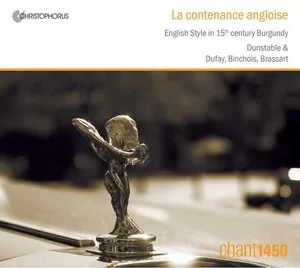
Contenance angloise (the "English countenance") is a 15th‑century English style of polyphony praised by contemporaries for its unusually sweet, consonant sound. It is characterized by pervasive use of imperfect consonances—especially thirds and sixths—resulting in sonorities that listeners today would recognize as triadic.
The style typically features vocal polyphony built over chant or simple melodies, often realized through techniques such as faburden (an English method of improvising 6–3 sonorities above a chant) and related first‑inversion textures akin to Continental fauxbourdon. Rhythms are generally smoother and less intricate than late medieval ars subtilior practice, with a clear, singable melodic profile and cadences that favor 6–8 motion, under‑third and double leading‑tone formulas. The net effect is a warm, luminous sonority that profoundly influenced Burgundian and early Renaissance music on the Continent.
The term contenance angloise was coined by the poet Martin le Franc (c. 1441–42) to describe the distinctive English manner associated above all with John Dunstaple. Hallmarks included the preference for imperfect consonances (thirds and sixths), the prevalence of first‑inversion sonorities, and smoother, more cantabile melodic lines compared with the rhythmic and notational intricacies of late medieval Continental styles.
Rooted in English liturgical and devotional contexts, the style grew from chant‑based composition and improvisatory techniques like faburden, and from English discant practices and gymel (temporary division of a part into two lines at the third or sixth). It flourished in three‑ and four‑voice textures, with clear cadential formulas (including under‑third and double leading‑tone cadences) that emphasized a sweet, triadic resonance.
By the 1420s–1440s, English manuscripts, musicians, and ideas circulated widely in Burgundy and beyond, influencing Guillaume Dufay, Gilles Binchois, and their peers. Continental fauxbourdon mirrored English faburden’s sonorous 6–3 textures, and the broader absorption of the English consonant ideal reshaped motet, mass, and chanson writing across Franco‑Flemish centers.
The contenance angloise helped normalize triadic thinking in European art music, accelerating the shift from medieval contrapuntal priorities toward the harmonic sensibilities of the Renaissance. Its emphasis on consonant sonority, clear melody, and singable voice‑leading became foundational to 15th‑century sacred polyphony and, ultimately, to Western tonal practice.


